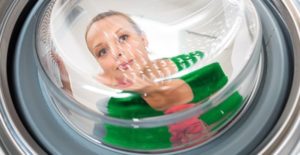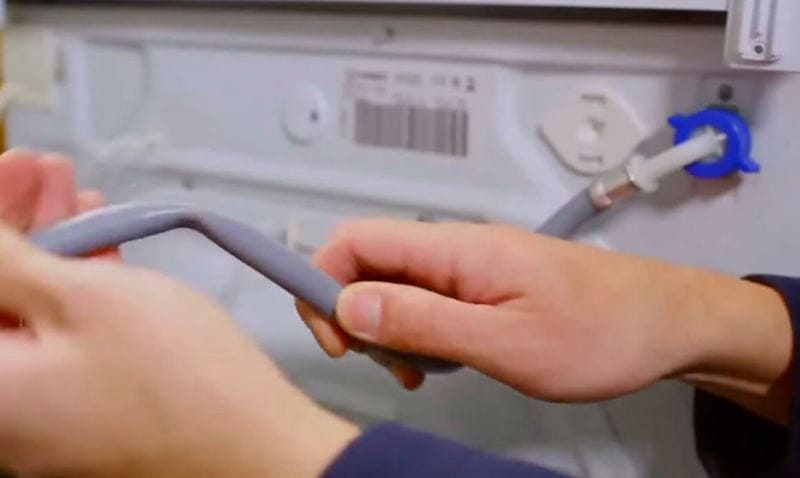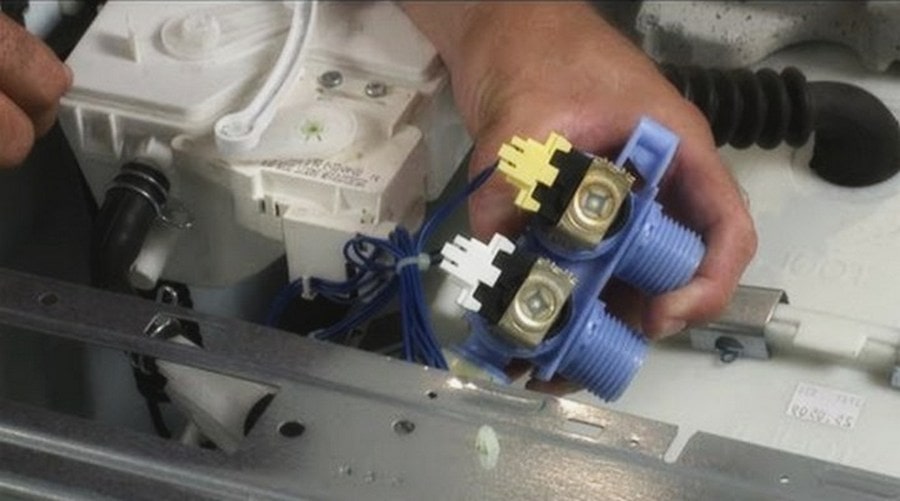 Even at work the most reliable household appliances Breakdowns occur periodically. For example, sometimes a situation occurs when water fills into a turned off washing machine. There are several reasons for this phenomenon. Methods of elimination, accordingly, also differ.
Even at work the most reliable household appliances Breakdowns occur periodically. For example, sometimes a situation occurs when water fills into a turned off washing machine. There are several reasons for this phenomenon. Methods of elimination, accordingly, also differ.
What does this mean?
According to the instructions for the washing machine, its internal elements must be kept dry between washes. First of all, this applies to the drum where dirty things are loaded.
If the washing machine fills with water when it is turned off, this can lead to the following problems:
- spreading an unpleasant odor in the room where the machine is installed;
- the formation of fungus and mold on the inner walls of the drum;
- gradual rusting of the metal elements of the device;
- danger of water pouring from the washing machine onto the floor of the apartment.
Where does the water come from when the washing machine is turned off?
There are two sources from which water can get into the washing machine drum:
- Sewer system. It is quite easy to recognize such a liquid by its unpleasant odor and dirty appearance. Usually this happens with units, the drain of which is connected to the siphon of a nearby sink.
- Water pipe. In this case we are talking about clean water seeping through the inlet valve. To check, you need to turn off the tap on the supply hose: the flow of water into the drum should then stop.

Methods for troubleshooting
Having discovered that the switched off washing machine is drawing water, you must immediately close the supply tap. If this is not done, the liquid will eventually begin to pour out of the drum onto the floor. Actions to eliminate the malfunction depend on its nature.
Water comes from the sewer
The reason why wastewater gets inside the washing device is usually an error in the drainage system. Therefore, it is strongly recommended that you strictly follow the manufacturer’s recommendations when installing a household appliance.
Why does sewer water end up in the washing machine drum?
- Poor location of the drain hose. This applies to situations where the drain occurs directly into the bathtub or sink. It is necessary to ensure that the end of the elastic tube is located below the level of the drum and is not immersed in water.
- There is a blockage in the tube. In this case, the waste water simply cannot come out. All you need to do is clean the hose.
- The siphon is clogged to which the unit is connected. This will also be indicated by stagnation of water inside the sink. Washing the siphon is quite simple: the main thing is to carefully unscrew its flask.
Water comes from the water supply
There is only one reason for this malfunction - failure of the water supply solenoid valve. This type of device cannot be repaired - it only needs to be changed.

Situations that can cause intake valve failure:
- The presence of a large amount of mechanical impurities in the water. The solution is to install dirt filters on the pipes.
- Valve wear. Like any other device, it has a service life.
- Faulty wiring inside the washing machine. A short circuit can cause spontaneous operation of the valve.
What to do to change the intake valve yourself:
- Disconnect the appliance and turn off the water supply.
- Rotate the machine so that direct access to the rear of the body is provided.
- Unscrew the supply hose and remove the top cover.
- Find the valve. It is usually installed immediately behind the supply tube.
- Dismantle the valve, disconnecting it from the tubes and wires.
- Install a new device by connecting all tubes and wiring to it in the correct polarity. To facilitate the procedure, it is recommended to photograph the supply lines before dismantling the old valve.
How to avoid trouble
To prevent situations when the washing machine draws water when it is turned off, it is recommended to perform several simple procedures:
- Screw in the shut-off valve after turning off the washing machine. Otherwise, pressure from tap water will constantly be applied to the inlet valve membrane. As a result, the service life of the device will be noticeably reduced. In cases where the supply hose is not equipped with a shut-off valve at all, this situation must be corrected immediately.
- Equip the siphon to which the drain hose is connected, check valve. Thanks to this, the washing machine will receive additional protection against waste water entering its drum.
- Install a shut-off valve between the siphon and the drain hose. By closing it after finishing washing, you don’t have to worry about clogging or breaking the siphon. The main thing is not to forget to open the valve before turning it on.
- Install a special anti-leak system that reacts to the appearance of moisture on the floor of the room. The Aquastop function inside the washing machine will not help in a situation where water enters a de-energized appliance. The fact is that the sensors of the built-in system are located inside the pan of the machine, and water from an overfilled drum usually flows directly onto the floor.









